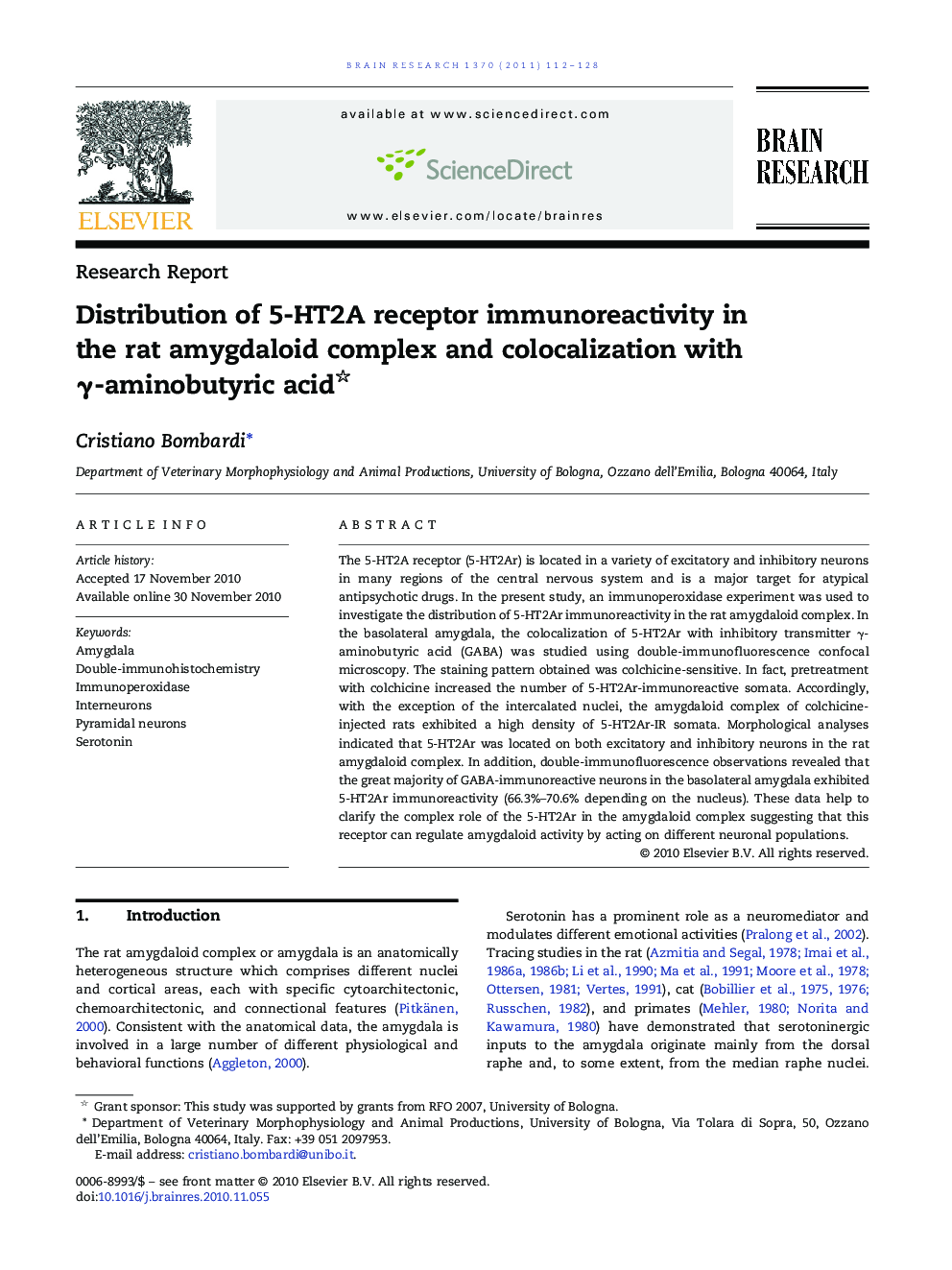| Article ID | Journal | Published Year | Pages | File Type |
|---|---|---|---|---|
| 6265257 | Brain Research | 2011 | 17 Pages |
The 5-HT2A receptor (5-HT2Ar) is located in a variety of excitatory and inhibitory neurons in many regions of the central nervous system and is a major target for atypical antipsychotic drugs. In the present study, an immunoperoxidase experiment was used to investigate the distribution of 5-HT2Ar immunoreactivity in the rat amygdaloid complex. In the basolateral amygdala, the colocalization of 5-HT2Ar with inhibitory transmitter γ-aminobutyric acid (GABA) was studied using double-immunofluorescence confocal microscopy. The staining pattern obtained was colchicine-sensitive. In fact, pretreatment with colchicine increased the number of 5-HT2Ar-immunoreactive somata. Accordingly, with the exception of the intercalated nuclei, the amygdaloid complex of colchicine-injected rats exhibited a high density of 5-HT2Ar-IR somata. Morphological analyses indicated that 5-HT2Ar was located on both excitatory and inhibitory neurons in the rat amygdaloid complex. In addition, double-immunofluorescence observations revealed that the great majority of GABA-immunoreactive neurons in the basolateral amygdala exhibited 5-HT2Ar immunoreactivity (66.3%-70.6% depending on the nucleus). These data help to clarify the complex role of the 5-HT2Ar in the amygdaloid complex suggesting that this receptor can regulate amygdaloid activity by acting on different neuronal populations.
Research Highlights⺠The 5-HT2A receptor is located in the somata and neuropil of the rat amygdala. ⺠Excitatory and inhibitory neurons in the amygdala express the 5-HT2A receptor. ⺠Many GABAergic neurons in the basolateral amygdala exhibit 5-HT2A receptor immunoreactivity.
